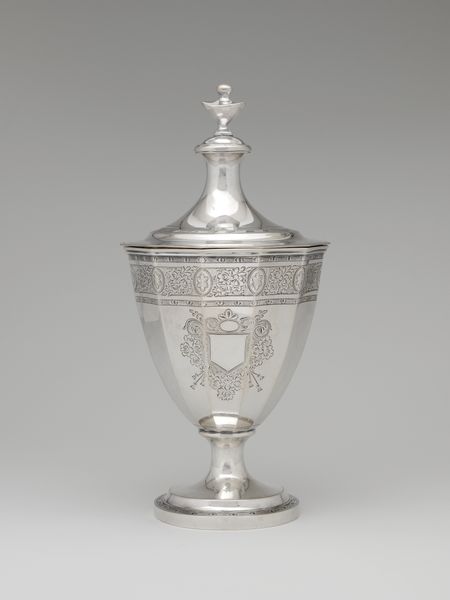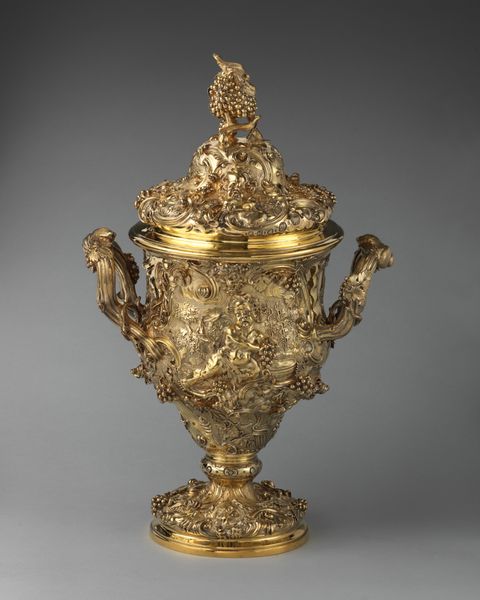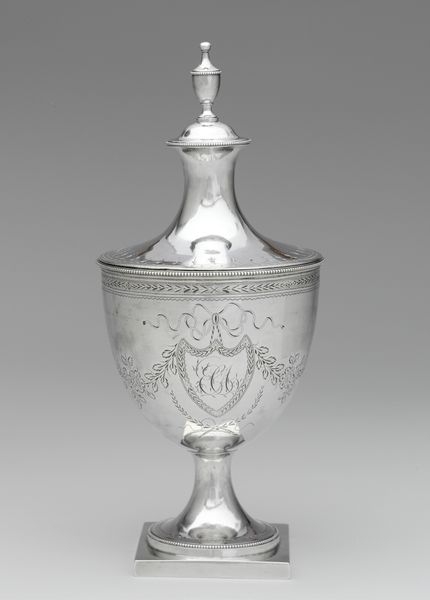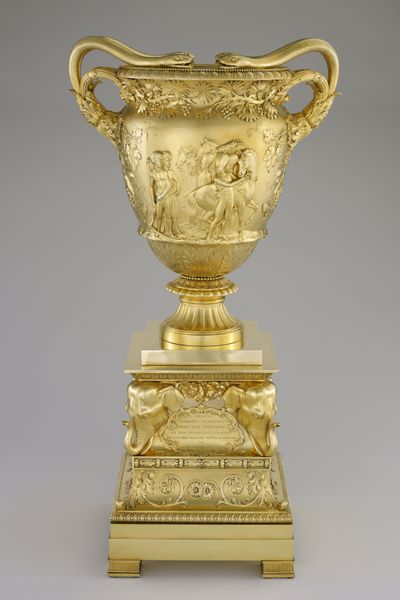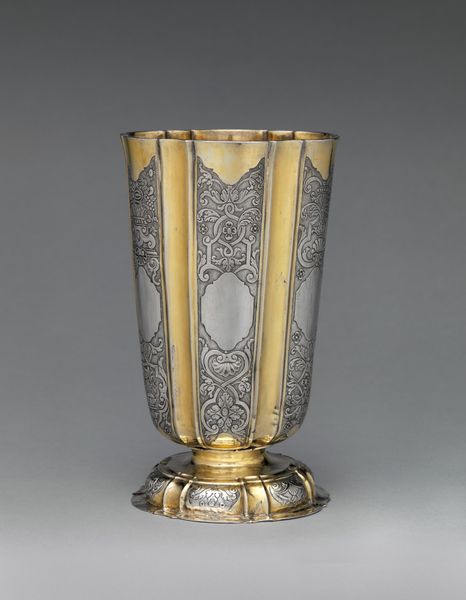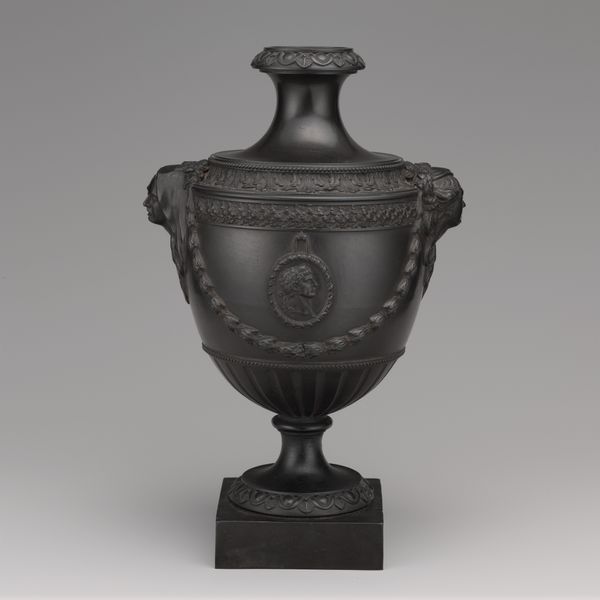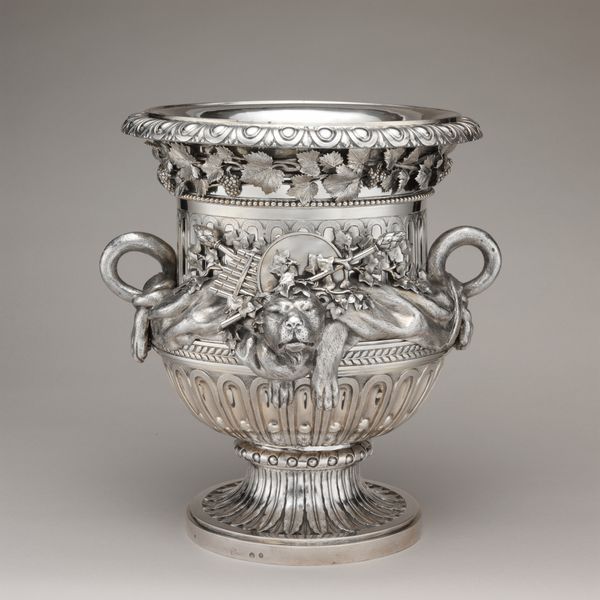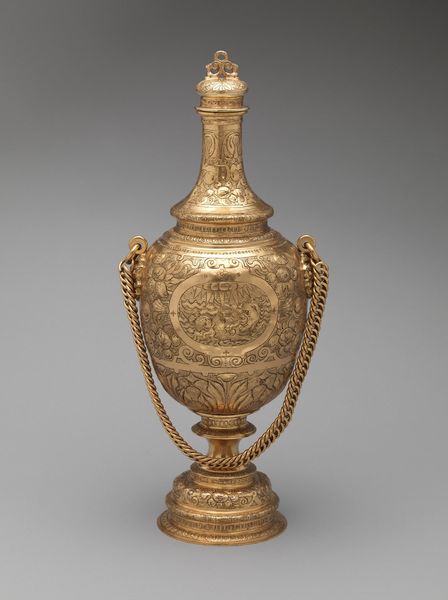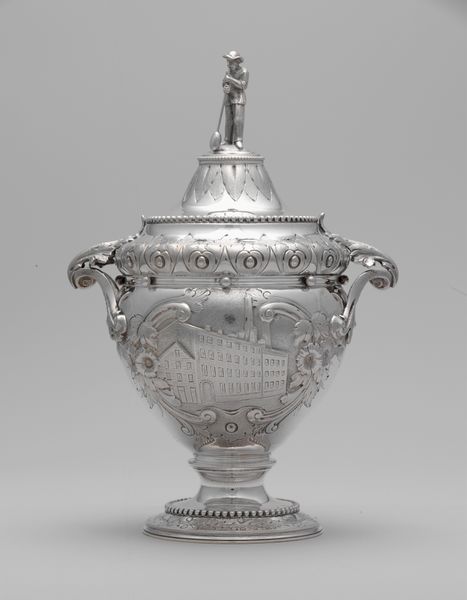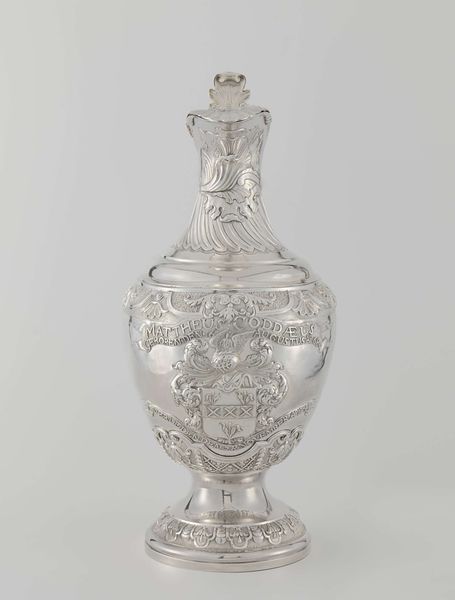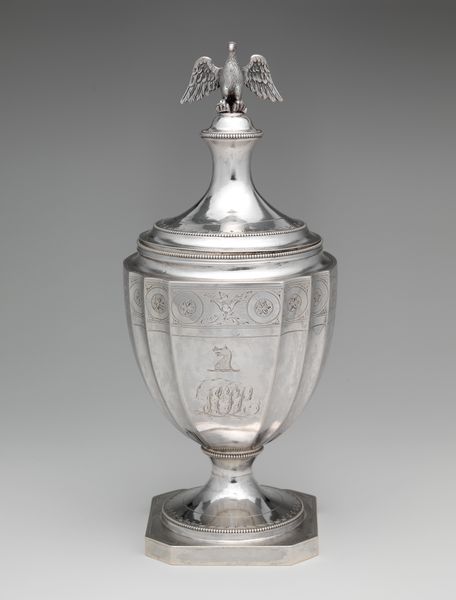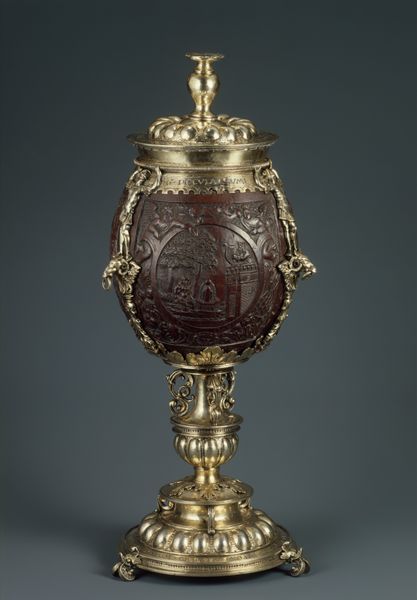
Dimensions: 33 1/2 x 14 x 11 5/16 in. (85.1 x 35.6 x 28.7 cm); Diam. 11 5/16 in. (28.7cm); 452 oz. 16 dwt. (14084.2 g)
Copyright: Public Domain
Editor: So, here we have "The Bryant Vase" created in 1876 by Tiffany & Co. It’s crafted from silver and resides here at the Met. The craftsmanship is incredible; I mean, look at all the detail! What strikes me is the sheer amount of labor that must have gone into producing this intricate object. How would you interpret it? Curator: Looking at "The Bryant Vase" through a materialist lens, it’s crucial to consider the social and economic context of its creation. This isn’t just a pretty object; it’s a product of specific labor practices, material sourcing, and market demands. Who were the silversmiths, and what were their working conditions? How did Tiffany & Co. acquire and profit from the raw materials? Editor: That's interesting; I hadn't considered the laborers. Do you think the design itself speaks to those issues at all? Curator: Absolutely. The neo-classical form appropriates historical prestige but think about what the intricate, almost obsessive detail *does*. It signifies wealth and exclusivity in the Gilded Age through conspicuous consumption. How much did it cost, who bought it, and what did *that* say about social stratification in America at the time? Was this meant for domestic display, or an exhibition piece meant to impress? Editor: Right, it's almost a symbol of the vast wealth accumulation of that period... Curator: Exactly! We shouldn't separate aesthetic appreciation from this object’s place within networks of production and consumption. The value of the vase lies as much in its material reality as it does in its artistic presentation. Editor: I'm glad we took some time to look at those factors because the materials really shape the understanding of the piece and how it fits into society. Curator: Agreed. By examining the "Bryant Vase" from a materialist perspective, we gain a richer understanding of art as a product of specific social, economic, and material conditions.
Comments
No comments
Be the first to comment and join the conversation on the ultimate creative platform.
